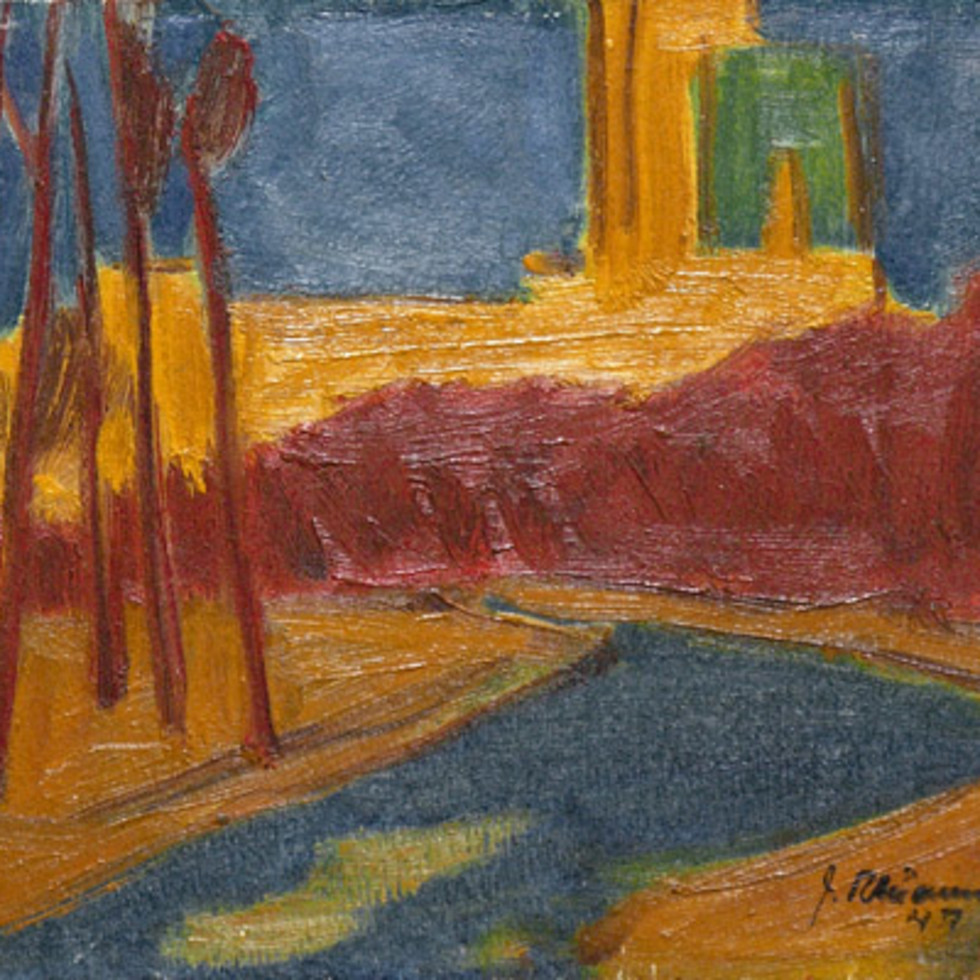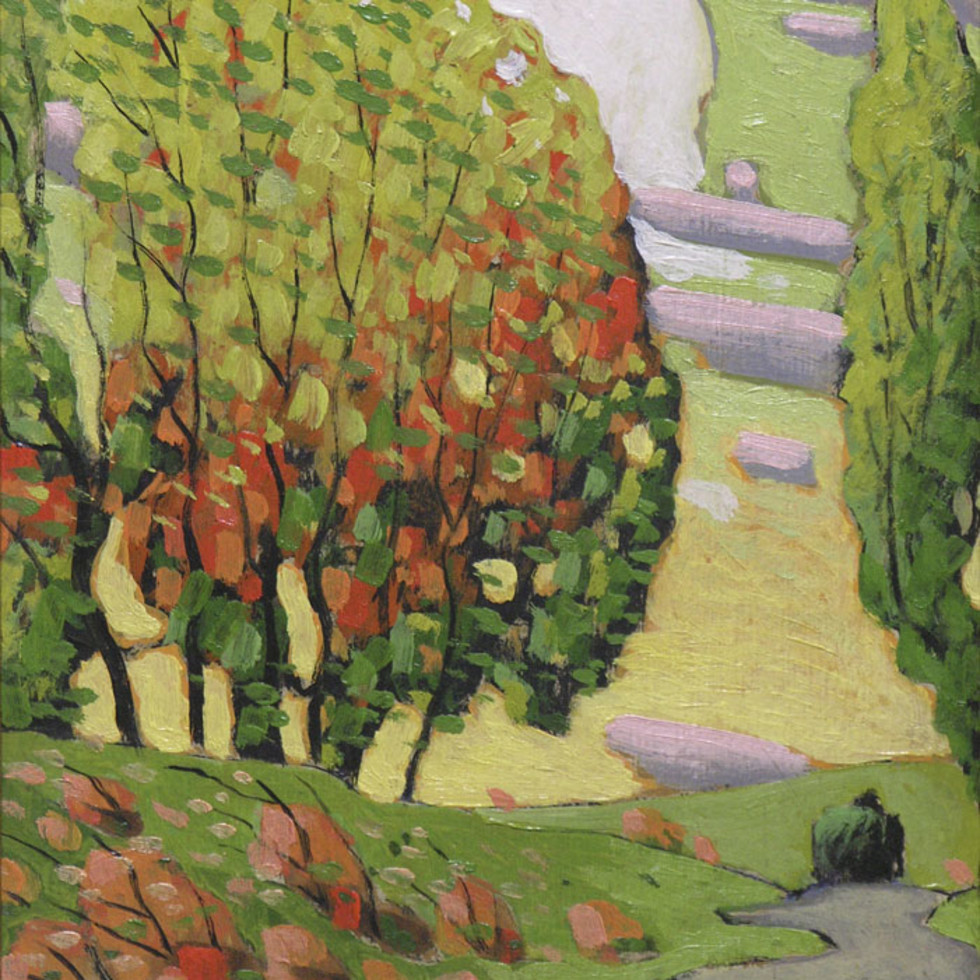Miller Brittain
 "This led me to ponder the problems of good and evil. I contemplated the inner conflict that is part of Everyman and tried to incorporate into my work such abstract qualities as love, despair, terror, and so on, since they are the inevitable experience of Everyman, and I felt they should be faced and dealt with rather than shrunk from."
Miller Brittain, 1949
"This led me to ponder the problems of good and evil. I contemplated the inner conflict that is part of Everyman and tried to incorporate into my work such abstract qualities as love, despair, terror, and so on, since they are the inevitable experience of Everyman, and I felt they should be faced and dealt with rather than shrunk from."
Miller Brittain, 1949
Miller Brittain was an outstanding draughtsman, a painter, watercolourist and muralist. He was one of the few Canadian artists creating social satire in the 1930s; his crowded scenes of everyday life reflect a sympathy for humanity and an ability to express character through gesture.
Brittain took art classes with Elizabeth Russell Holt in Saint John, New Brunswick, and studied under Harry Wickey at the Art Students League of New York. There, he was introduced to the work of Rembrandt, Goya and Hogarth, as well as that of Kenneth Hayes Miller, the American social realists, and the Ash Can School, whose members depicted gritty urban scenes. In 1932, Brittain returned to Saint John and worked at various construction and office jobs. He soon established a studio on the waterfront; this became a meeting place for the artistic community. Later, he would rent a studio next door to Jack Humphrey. During the 1930s, he became active with the Oxford Group, a Christian group that took an interest in social issues and workers' rights. Brittain attended the landmark Kingston Conference in 1941.
After fighting with the Canadian Air Force in World War II, and working for two years as an official war artist, Brittain returned to Saint John in 1946. He held his first important solo exhibition in 1949 at the New Brunswick Museum, and his first solo show in New York the following year.
During the 1930s, Brittain moved from single portraits to large groups of ordinary people and urban landscapes that show a humanist approach. Master McCullough, 1939, exemplifies his interest in the portraits of the Italian Renaissance and the work of Hayes Miller. Longshoremen, 1940, shows a crowd of massive figures that fill the frame, borrowing from German Renaissance compositions. Later, Brittain became more interested in the psychological; his post-war work includes biblical imagery and subjects related to the unconscious. He experimented with abstraction and Surrealism, creating mysterious and colourful forms based on humans, animals, plants, and celestial bodies.
Brittain was a founding member of the Federation of Canadian Artists, and a member of the Canadian Society of Graphic Artists and Contemporary Arts Society. Among his honours was the Canadian Centennial Medal, awarded posthumously.
Source: National Gallery of Canada.







